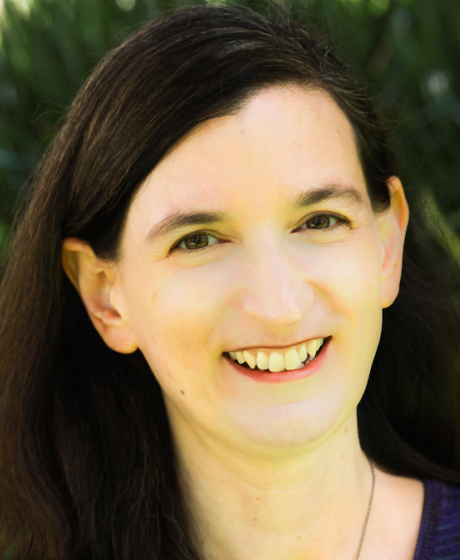As the organization’s education director, Debbie Raucher oversees all of the nonprofit’s programs related to education — the majority of which focus on supporting transition-age foster youth and those who have experienced homelessness to ensure they can successfully enroll and thrive in postsecondary education.
California Schools recently talked with Raucher about the barriers these children face in transitioning to higher education, the role K-12 schools play in preparing students for success and the need for systems to share information about foster youth.
Can you describe your work with John Burton Advocates for Youth?
Most of the work that we do is focused on supporting transition-age foster youth as well as youth who’ve experienced homelessness to be able to successfully enroll in and be successful in postsecondary education. We created something called the California Foster Youth FAFSA Challenge where we’re working with county offices of education to track FAFSA (Free Application for Federal Student Aid) completion, specifically among foster youth who are high school seniors, and then bring together all of the different partners in their community to ensure that every foster youth has somebody who’s supporting them to be able to complete the FAFSA.
We did a research study a few years ago that found that foster youth were not receiving financial aid at the rates they should be based on eligibility, and a big part of the reason for that is that they weren’t successfully getting through the whole FAFSA process. A lot of our focus is on community colleges because that’s where about 85 percent of the foster youth are, but we do work with CSUs and UCs as well to expand what’s available to foster youth once they arrive at college in order to support them to be successful.
Foster youth and homeless students are often lumped together in discussions surrounding barriers to achievement — is there much difference in terms of how to best provide support specifically for foster youth?
Foster youth are significantly overrepresented among students who have experienced homelessness, so there’s unfortunately a tremendous amount of overlap between those populations, but I think there are some key distinctions. A student who has been in the foster care system has, by definition, experienced childhood trauma and there’s a lot of research about the impact of childhood trauma and how that then manifests in particular young adults. Having professionals who understand trauma available to work with those students in a way that’s trauma-informed is essential for these young people to be successful. There’s just so many things that go into that in terms of recognizing self-sabotaging behavior and other mental health challenges. The instability is huge, too.
There’s a program at 45 community colleges called Next Up, which was developed to address that disparity and to provide targeted support to this particular population. They provide a whole range of services; academic counseling, tutoring, mental health support, direct financial support — so, assistance with purchasing textbooks or bus passes, gas vouchers, food vouchers, emergency housing support, access to priority registration, support with financial aid applications, the list goes on and on. If somebody is in crisis, they provide a lot of personal counseling and support.There’s sort of a range of potential benefits available to foster youth, but it’s a very complicated system to navigate. What you get depends on when you entered in foster care and how old you are now. It’s hard, quite frankly, for a lot of the professionals to fully understand all the benefits and the eligibility for those different benefits, much less an 18-, 19-, 20-year-old trying to figure all of that out.
What are some of the struggles foster youth face in college that their peers perhaps don’t typically deal with?
There’s no shortage of data showing that foster youth are not faring particularly well once they reach college. The outcomes across the whole range of metrics typically are well below that of other students. Even when you compare foster youth to other special populations like first-generation students, foster youth typically fare worse. There’s just a lot of issues that come up with foster youth that don’t necessarily come up with students who haven’t experienced the foster care system.These young people have experienced some sort of trauma that, whatever the abuse or neglect was, resulted in them being removed from their family. Then there’s the trauma of removal, and oftentimes a lot of moving around from placement to placement, from school to school. We’re finding the students who exited foster care at younger ages are presenting with many of the same challenges that students who were in foster care at older ages are presenting with. The truth is, if a young person gets reunified with their biological family, they’re often being reunified into a pretty unstable home situation where maybe the foster care system has determined that the most pressing safety issues have been addressed, but that doesn’t mean it’s necessarily a stable home situation.
What steps could the K-12 system take to help set children in foster care up for postsecondary success?
I think taking a much more focused and targeted approach to support for the whole college matriculation process is important. Foster youth or students who’ve experienced homelessness don’t necessarily have the adult supporters in their lives who are sitting there going, “Did you get your FAFSA done?” or “Did you apply for college?” Expecting a high school student to somehow navigate that process on their own is just not realistic. Foster youth are a population that’s specifically identified for targeted support under the Local Control Funding Formula, and I think the degree to which that support exists varies tremendously across districts. I think even where it does exist, that college matriculation piece isn’t necessarily on the radar. Every district should sit down and think about, “How are we supporting foster youth specifically, and how are we supporting foster youth specifically with college matriculation? How are we partnering with the Foster Youth Services Coordinating Program?” The FYSCP doesn’t do direct service. Their role is to provide technical assistance to the districts and to coordinate efforts across systems.
We know that college counselors have huge caseloads and they’re not necessarily targeting foster youth specifically, but they should be. Unfortunately, there’s still an attitude among some that these young people aren’t college material. If we get them into a job and get them to graduate high school, that’s success, but the reality is in today’s economy, without some form of postsecondary education, you’re pretty much at a minimum wage job for the rest of your life. When we talk about postsecondary education, we’re not limiting that to a four-year bachelor’s degree. Community colleges have so many vocational career and technical education programs in all kinds of different fields. I think one thing that you sometimes hear from people who work in the foster care field is that if you ask a foster youth, “What is it that you want to be?”, they’ll often say “a social worker” or “a probation officer” because that’s what they’ve been exposed to. They don’t necessarily even have the exposure to such a huge range of professions that exist in this world.
We do a huge disservice to youth in the foster care system where, just because maybe they didn’t excel in high school, we say, “Well, maybe college isn’t for you,” rather than helping them to understand what postsecondary education can mean and how it can fit their interests. I have talked to many college students with experience in foster care who have stories about the people in their lives telling them that they weren’t college material. Whether that’s their biological family or their social worker. I think that it’s important to understand if you’re a high school counselor, that you maybe need to emphasize even more to a foster youth that they are college material because you’re needing to potentially combat some of the other messaging that they maybe have received from other people in their lives.
Often in education, the issue of systems being siloed comes up — have you found that to be the case when it comes to addressing the needs of foster youth in the K-12 and postsecondary systems?
Yeah, it unfortunately is. I think there are a lot of challenges with information sharing. We don’t want to violate confidentiality, for example, but at the same time, we know that for the colleges it’s very frustrating when they want to go to a high school to meet with each foster youth and help them complete a FASFA, and talk about their programs at the community college, and get kids connected to resources before they even leave high school, and sometimes they’re told, “Sorry, we can’t accommodate that. We can’t tell you who the foster youth are.” That’s hard and doesn’t ultimately serve our students. It varies a lot by district and by region. There’s very different perspectives on what FERPA [Family Educational Rights and Privacy Act] allows, so that makes for very uneven implementation. There are all of these services that are available to foster youth, and there has to be a way to communicate that to them.
I think there are other challenges that are not so much around the issue of college access. When a child gets moved within the foster care system from one placement to another, there are all these laws in place that specify that there’s supposed to be something called a “best interest determination” made where the school and the child welfare system sit down together and decide, “OK, this young person is being moved. Does it make sense for them to also change schools, or should they stay at the school of origin?” They have the right to stay at the school of origin even if they move out of that district because we know moving around from school to school is not a good thing for a student’s education.
So, there needs to be communication between the child welfare agency and the school, and that communication needs to happen quickly and consistently. There’s not always the comprehensive conversation happening that should be around figuring out transportation and transitions to new schools. That siloing and not having consistent processes to have those kinds of conversations definitely is a disservice to our young people.
Are there any districts/higher education institutions that are a good example of best practices?
There’s an organization in Los Angeles called The Alliance for Children’s Rights that works very intensely with some districts down there to develop systems to support foster youth. They’ve developed some good models of protocols and systems and such. Riverside County is good, too. Riverside received a grant a couple of years ago to specifically develop transition pathways for foster youth from high school into college. They hired staff who are actually employees of the community college district but are placed in the high schools. Their task is solely to support this transition for foster youth from the high schools into college. That, I would say, is one of our model programs. Another place that does a really good job with this is San Luis Obispo. Their Foster Youth Services Coordinating Program at the county office of education has a staff person dedicated to college transition who works with the district.





